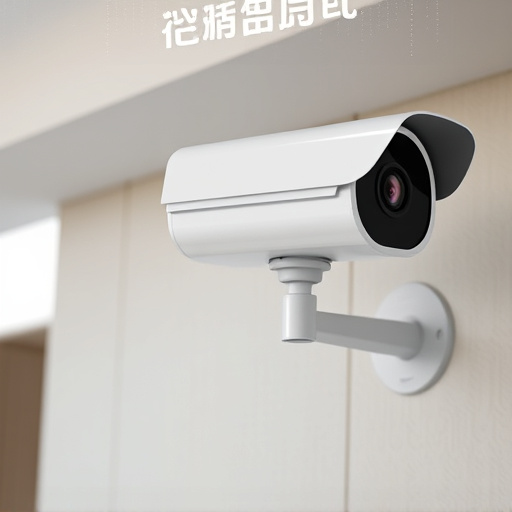Dummy security cameras, designed to look realistic, act as powerful psychological deterrents against crime by creating an illusion of enhanced security. They should be placed at entry points, windows with clear lines of sight, public areas, high-traffic zones, and residential front doors/yards for maximum effectiveness. Position them at eye level or slightly elevated, unobstructed, and regularly changed to avoid anticipation from intruders. Regional laws and privacy considerations must be respected while strategically placing these cameras for property protection without the expense of real camera installations.
“Enhance your home or business security without breaking the bank with imitation security cameras. This comprehensive guide explores the world of dummy security cameras, their benefits, and diverse types available. We’ll delve into the art of selecting the best locations for visual deterrence, offering installation tips to maximize effectiveness. From legal considerations to ethical use cases, discover how these fake cameras can boost security while respecting privacy. Get ready to transform your space with this cost-effective, high-impact solution.”
- Understanding Dummy Security Cameras: Benefits and Types
- Choosing the Best Locations for Visual Deterrence
- Installation Tips for Optimal Effectiveness
- Legal Considerations and Ethical Use Cases
Understanding Dummy Security Cameras: Benefits and Types
Dummy security cameras, also known as imitation or fake cameras, are an effective deterrent against crime and offer several advantages over traditional security systems. Understanding their benefits can help property owners make informed decisions about enhancing their home or business security. One of the key advantages is their visible presence, which acts as a powerful psychological barrier, deterring potential intruders from targeting your property. These cameras are designed to look realistic, often mimicking the appearance and placement of genuine security equipment, making them an excellent choice for areas where visibility and intimidation are crucial.
In terms of types, dummy cameras come in various forms, including static models that mimic real cameras with a fixed lens and flash, as well as dynamic options that pan, tilt, or zoom (PTZ) to simulate active surveillance. The best locations for these devices include entry points such as front doors, back alleys, or windows with clear lines of sight. Strategically placing dummy cameras can create the illusion of enhanced security, making it harder for criminals to determine the actual layout and vulnerabilities of your property.
Choosing the Best Locations for Visual Deterrence
When selecting the best locations for dummy security cameras, understanding human behavior and criminal psychology is key. Public areas like entrances, exits, parking lots, and high-value asset zones are prime targets for theft or vandalism. Placement of fake cameras in these strategic locations acts as a powerful visual deterrent, sending a clear message to potential criminals that their actions are being watched.
Consider environments with high foot traffic where it’s easier for the cameras to capture clear footage. Retail stores, banks, and office buildings can benefit from visible dummy cameras on rooftops or strategically positioned on walls. Even in residential areas, mimicking security measures like placing dummy cameras near front doors or in yards can significantly enhance property protection and deter criminal activity.
Installation Tips for Optimal Effectiveness
When installing an imitation security camera with motion detection, placement is key to achieving optimal effectiveness. The best locations for dummy security cameras are areas that are visible from entry points like doors and windows, as well as locations that offer a clear view of your property’s perimeter. This strategic positioning discourages potential intruders, as they’ll be less likely to attempt an unauthorized entry if they believe they’re being watched.
For maximum impact, place the fake cameras at eye level or slightly elevated to mimic real surveillance equipment. Keep them unobstructed and away from places where they might be easily covered or blocked by trees, plants, or other obstructions. Regularly changing their positions can also enhance their deterrence value, as intruders won’t know what to expect.
Legal Considerations and Ethical Use Cases
When considering the legal aspects of using imitation security cameras, it’s crucial to understand the region-specific laws regarding surveillance and privacy. While many countries have strict regulations on public surveillance, there are often loopholes or less stringent rules when it comes to private property. This is where dummy security cameras excel as a tool for home or business owners seeking to enhance their security without crossing legal boundaries.
Ethically, these devices can be employed in various scenarios, such as deterring potential thieves or vandals from entering private residences or commercial spaces. Best locations for dummy security cameras include entry points, windows, and high-value asset areas where a visible presence of surveillance can act as a powerful deterrent without the need for extensive and costly real camera installations.
Imitation security cameras, or dummy cameras, offer an affordable and effective solution for enhancing home and business security. By strategically placing these devices at the best locations for dummy security cameras—where real cameras would be most beneficial—you can significantly deter potential criminals. Installation tips and legal considerations ensure their optimal effectiveness and ethical use. Understanding the benefits and types available, along with choosing the right spots, will make your dummy security system a valuable asset in maintaining safety and peace of mind.
